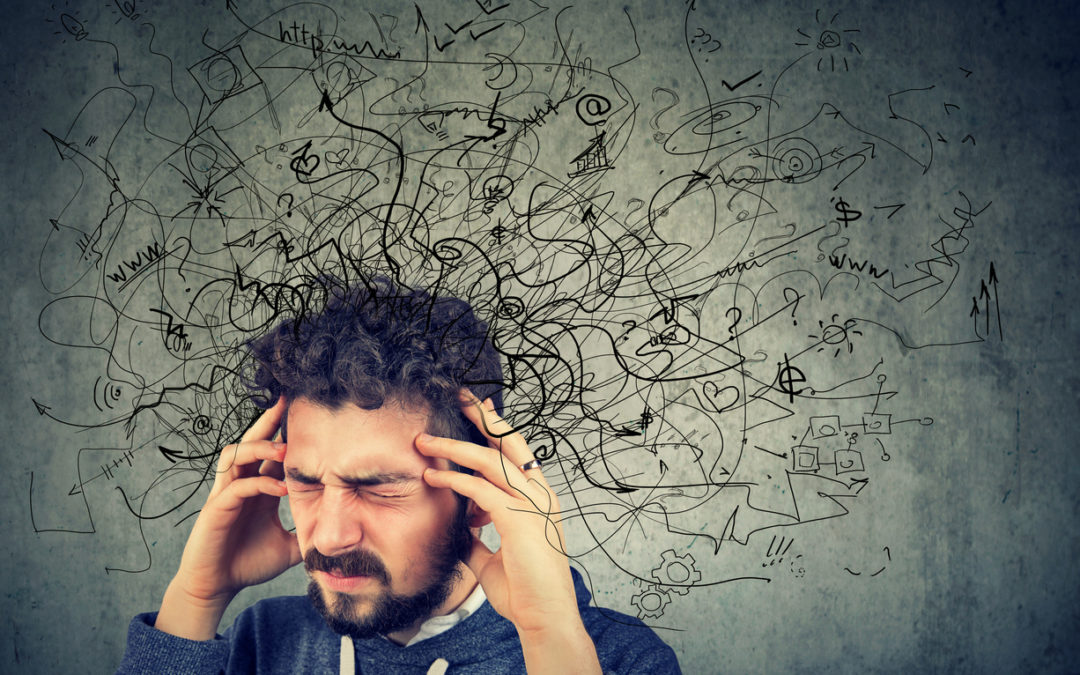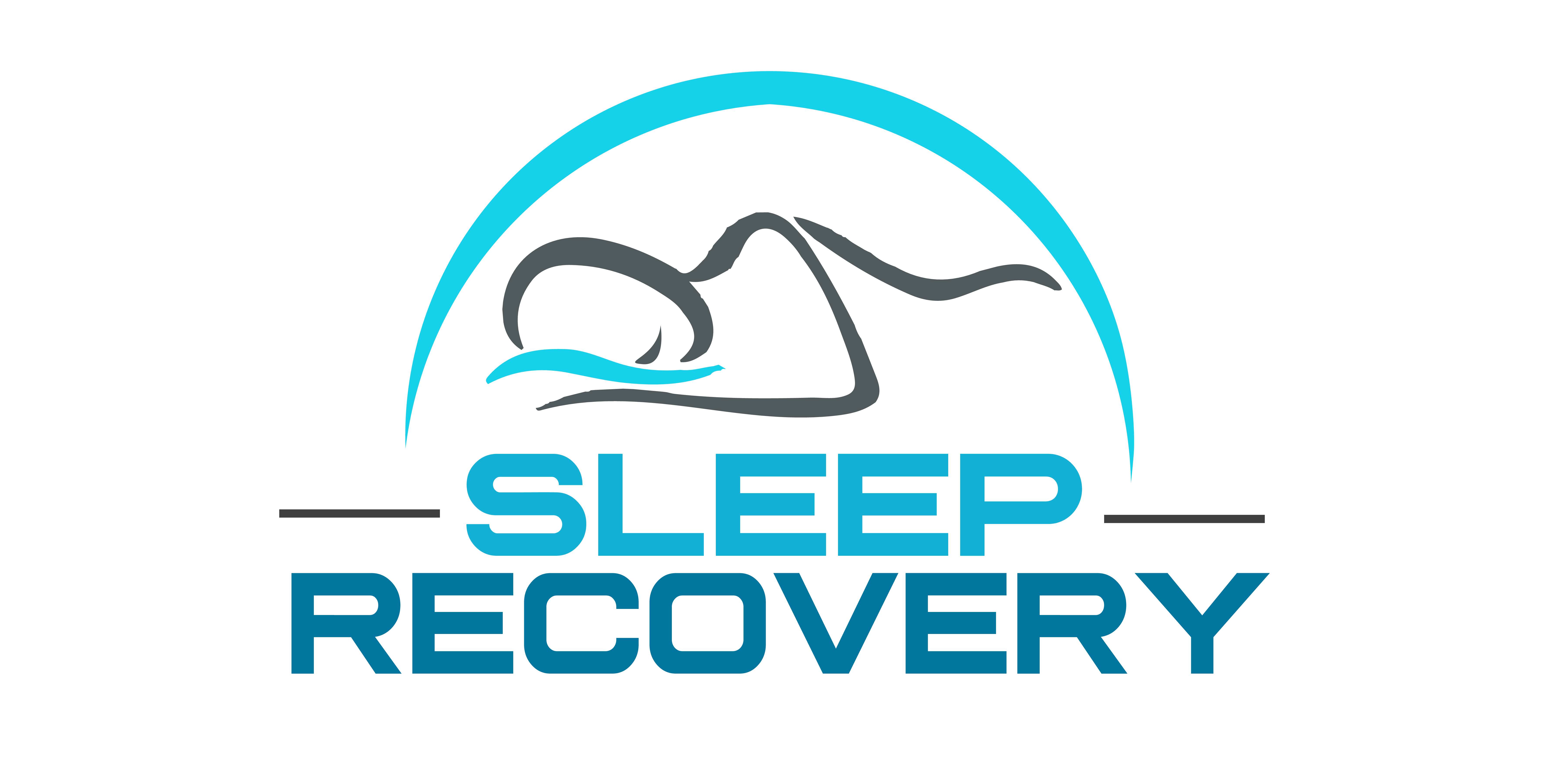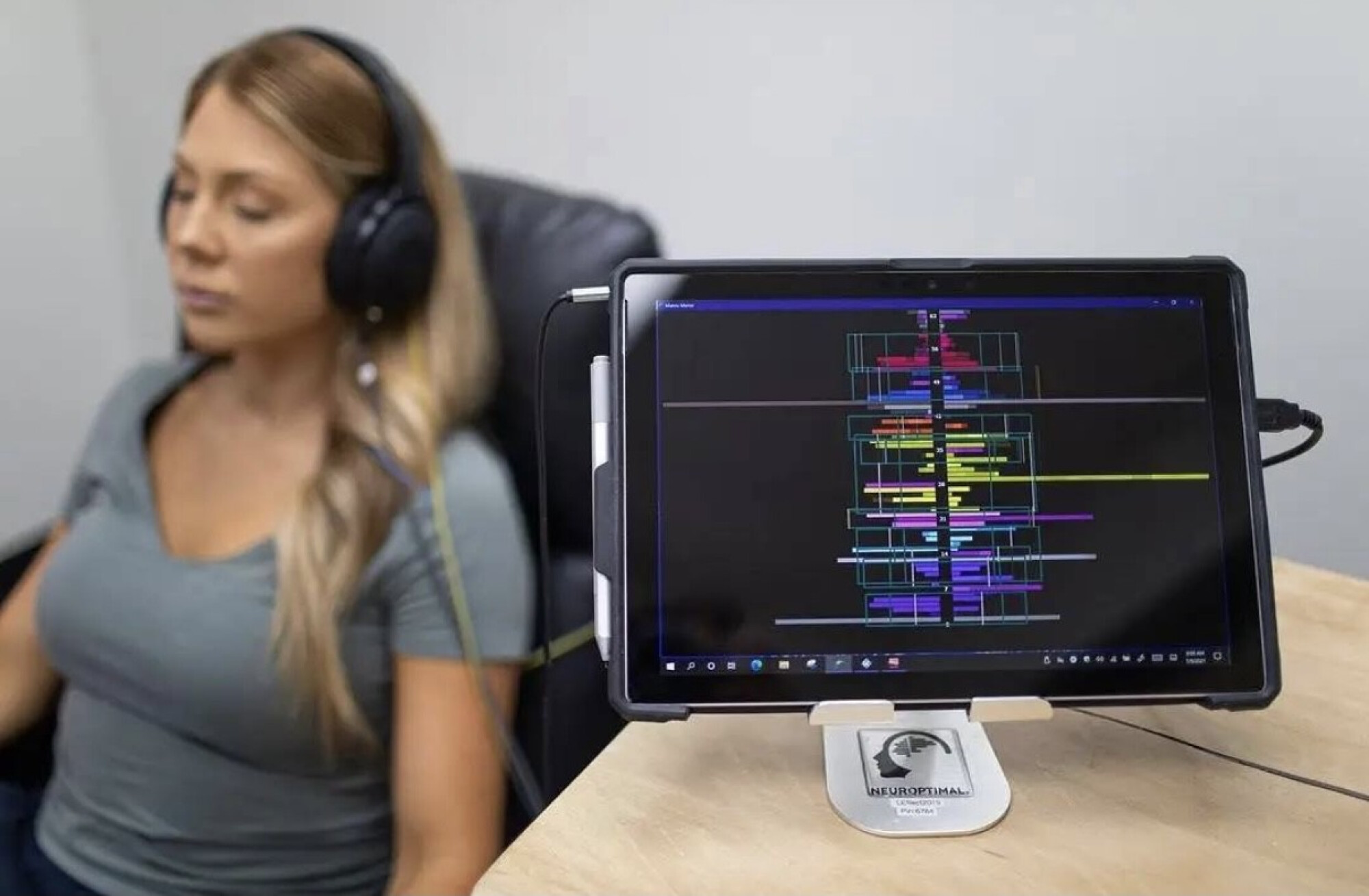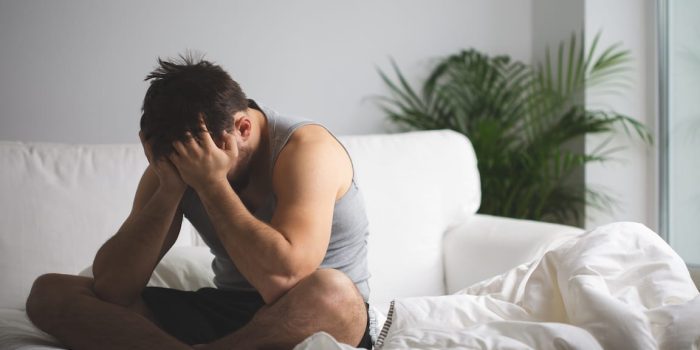Stabilizing the Anxious Brain: How Brainwave Technology is Transforming Sleep and Anxiety Treatment

New Approaches Offer Hope for Those Seeking Relief from Our Most Common Mental Health Challenge
Several new novel treatment methods are revealing a paradigm shift occurring in anxiety treatment, moving beyond symptom management toward addressing the neurobiological roots of anxiety disorders that affect approximately 40 million American adults annually. Despite a multitude of approaches available, only about half of those seeking conventional treatment experience satisfactory improvement, leaving millions suffering from persistent symptoms that impair functioning and diminish quality of life.
“We’re witnessing a fundamental transformation in how we understand and treat anxiety,” explains David A. Mayen, founder and program director at Sleep Recovery. “After decades of approaches that either mask symptoms or require indefinite maintenance, we now have methodologies that can produce lasting neurological change by addressing the root dysfunction in brain activity patterns.”
The Bio-Electrical Basis of Anxiety and Insomnia: A Connected Challenge
Central to this evolution is growing recognition that anxiety and sleep disruption represent interconnected manifestations of underlying neurological dysregulation, not separate conditions requiring distinct treatments.
“The same brainwave instabilities that prevent restful sleep often drive daytime anxiety,” explains Dr. Jeffrey Wilson, clinical director at Sleep Recovery with 39 years of clinical experience. “When we directly address these patterns through brainwave entrainment, we can simultaneously improve both sleep quality and anxiety symptoms, something medication alone rarely accomplishes long-term.”
This integrated understanding helps explain why anxiety and insomnia so frequently co-occur. According to the CDC, 78% of teens and young adults experience chronic insomnia, while 66% report chronic anxiety, with substantial overlap between these groups. The statistics reflect what clinicians have long observed: disrupted sleep and anxiety symptoms typically reinforce each other in a self-perpetuating cycle.
When someone experiences anxiety, their brain often becomes locked in high-frequency beta wave patterns characterized by hyperarousal and vigilance patterns incompatible with the slower brain rhythms necessary for restorative sleep. Conversely, inadequate sleep impairs the brain’s regulatory mechanisms, making anxiety symptoms more pronounced the following day.
“Most treatments target either sleep or anxiety independently,” notes Dr. Wilson. “Our approach addresses their shared neurological foundation, which is why clients often report simultaneous improvement in both areas.”
Brainwave Entrainment: Sleep Recovery’s Pioneer Approach
Among the most promising specialized interventions addressing this unified challenge is brainwave entrainment – a methodology that directly addresses neurological patterns underlying both insomnia and anxiety. Sleep Recovery has developed a systematic approach using FDA-approved technology to help clients achieve lasting improvements without medication.
“What makes our approach distinctive is that we’re not masking symptoms – we’re addressing the underlying brainwave instabilities that drive both sleep disruption and anxiety,” explains Mayen. “The brain receives detailed feedback about its activity patterns, allowing it to naturally self-correct toward more stable functioning.”
The methodology employs specialized software that detects irregular brainwave patterns and provides direct feedback through visual and auditory signals. Clients typically participate in 30-minute sessions every other day, a protocol that has helped thousands return to healthy sleep that sustains long-term without ongoing intervention.
Ruby Huggler, who struggled with chronic insomnia for 15-20 years and had exhausted pharmaceutical options, reported remarkable improvements after just six sessions:
“No more insomnia – I can enjoy eight hours of rested sleep… No more mid-insomnia – if I wake for any reason in the middle of the night, I fall back to sleep easily. Less stressed – I am just as busy as I have always been. My daily schedule/adventures have not changed. Yet, I have the energy and mental focus to get through it without feeling stress, anxiety, worry, etc.”
The program sets ambitious but achievable goals: helping clients achieve 6.5 to 8.5 hours of sleep 5-6 nights weekly and an 85% reduction in overall anxiety. While such claims might initially sound optimistic, they reflect the practice’s consistent outcomes over thousands of client experiences since its founding in 2008.
One of the most valuable aspects of advanced brainwave entrainment is its adaptability to different demographic groups, whose anxiety and sleep challenges often manifest in distinct patterns.
Women’s Experiences: Breaking the Anxiety-Insomnia Cycle
Women experience anxiety disorders at nearly twice the rate of men, with unique stressors often contributing to this disparity. “Insomnia and anxiety are at epidemic levels for women all around the world,” notes Mayen. “From career and family demands to feelings of insecurity, women need solutions that address their specific challenges.”
Sleep Recovery’s approach for women emphasizes both neurological recalibration and supportive coaching. “Our program includes personal coaching and phone support to prioritize clients’ needs, answer questions, and provide helpful dialogue,” explains Mayen. This combination helps address both the neurobiological and psychological aspects of anxiety that many women experience.
Client Julie Wendling reflects this experience: “David has been so encouraging with helping me understand my anxiety, and the treatments have also helped. Even though I completed all sessions, he still works with me, and I appreciate that. He sincerely cares and wants to help you get better.”
Men’s Challenges: Performance Recovery and Silent Suffering
Men often experience anxiety and sleep disruption differently, frequently with an emphasis on performance impacts and a reluctance to seek help. “What makes a man happy? Waking up rested, motivated, and strong are top of the list,” observes Mayen. “When men struggle through the day listless and tired, it’s hard on them psychologically. Men need to end their day as satisfied, accomplished providers.”
This performance-oriented framing often resonates more effectively with male clients who might otherwise resist mental health interventions. “Brainwave entrainment is about recapturing performance,” Mayen explains. “Like cars, human brains run better with a full tune-up.”
Christopher Brandon, who sought help for chronic sleep difficulties, found this approach particularly compelling: “David has been a huge help in my journey to recovering good natural sleep. His therapies are easy to do and have multiple other benefits. I would highly recommend him to anyone struggling with sleep issues.”
Youth and Young Adults: Addressing a Growing Crisis
Perhaps most concerning is the dramatic rise in anxiety and sleep disorders among young people. “Since the end of the COVID-19 pandemic, young people of all ages have been struggling with record levels of attention issues, anxiety, and a profound lack of proper sleep,” notes Mayen.
Sleep Recovery has developed specialized protocols for children as young as three and college-aged young adults. “Through Sleep Recovery’s programs, kids and young adults from 3 to 26 can benefit from early detection and a re-stabilization of their brain performance,” explains Dr. Wilson.
This early intervention proves particularly valuable given evidence that untreated anxiety and sleep disorders in youth often persist into adulthood, potentially becoming more treatment-resistant over time. For parents concerned about medicating young children, brainwave entrainment offers an attractive non-pharmaceutical alternative.
“For most parents today, medicating their children is out of the question,” acknowledges Mayen. “Physicians and Pediatricians mean well, but their hands are tied to what they can recommend. Now, there are better and more natural options for insomnia and anxiety that have higher success outcomes. For these kids and their families, we hope pediatrics can move away from child psychiatry referrals and into these new and safer methods. “
The approach is particularly valuable for adolescents and young adults who resist traditional talk therapy. “As odd as it may sound, the short answer is no,” Mayen responds when asked if verbal communication is necessary for treatment success. “Most teens and college kids don’t communicate their feelings very well. But our program doesn’t require that. The software and the brain communicate directly, without requiring language-based therapy to achieve excellent results.”
Accessibility and Implementation: Breaking Down Barriers to Care
What makes brainwave entrainment particularly valuable in today’s treatment landscape is its accessibility. Sleep Recovery clients can receive equipment shipped directly to their homes and participate in sessions remotely with ongoing support and guidance, making the intervention available to individuals throughout the United States, including college students living away from home and those in areas with limited access to specialized mental health services.
“Yes, help is available to anyone in all 50 US states, providing they can receive a FedEx shipment and have an internet connection,” confirms Mayen when asked about helping college students away from home.
This remote capability was particularly valuable during the COVID-19 pandemic when in-person treatment options were limited. One client noted: “After a few of these sessions, I started feeling calmer with little to no anxiety. This program has changed how I deal with my everyday life. Sleepless nights due to troubled thoughts and anxiety have now lessened substantially.”
The program’s structured approach includes comprehensive tracking to monitor progress. “Fitbit smartwatches are now very accurate (91-94%) at providing daily reports that show details like total sleep time, nightly wake-ups, and healthy proportions of deep, dream, and intermediate stages of their sleep architecture,” explains Mayen. The program will also report on changes/improvements in anxiety and stress levels.
This objective measurement provides accountability and motivation as clients witness their neurological patterns stabilizing over time. “As a parent, you’ll receive weekly progress reports showing how they are improving along their path to full recovery,” Mayen notes when discussing the youth program. “We like for it to be a team effort. Family support is always encouraged.”
While brainwave entrainment represents a powerful approach to anxiety and sleep disorders, several complementary innovations are expanding the toolkit available to those seeking relief.
The regulatory landscape is also evolving, with the FDA recently clearing its first digital therapeutic specifically for generalized anxiety disorder. DaylightRx, developed by Big Health, delivers cognitive behavioral therapy through a structured digital program that patients access through their smartphones.
“Digital therapeutics represent a critical bridge between demand for anxiety treatment and the limited availability of trained providers,” says Dr. Elena Cortez, psychiatrist and digital health researcher. These platforms can extend evidence-based approaches to underserved populations while maintaining clinical oversight through prescription requirements.
The Medicare Physician Fee Schedule 2025 includes a proposal to establish reimbursement pathways for FDA-cleared digital therapeutics – a development that could dramatically expand access if implemented.
Circuit-Specific Interventions: Targeting Neural Pathways
Research into specific neural circuits involved in anxiety continues advancing our understanding of potential targeted interventions. Transcranial magnetic stimulation (TMS), already established for depression treatment, now shows promise for specific anxiety disorders. This non-invasive procedure uses magnetic pulses to stimulate specific brain regions without requiring medication.
“We’re increasingly recognizing that anxiety disorders involve dysfunction in specific neural circuits,” explains Dr. Nick Balderston, research assistant professor of psychiatry at the University of Pennsylvania’s Perelman School of Medicine. “The ability to modulate activity in these precise regions through targeted stimulation represents a promising avenue for patients who haven’t responded to conventional treatments.”
This circuit-specific approach also extends to pharmacological innovations, with research into the glutamate system – a primary excitatory neurotransmitter network distinct from the serotonin system targeted by most anxiety medications – yielding promising leads.
Integrative and Personalized Approaches: The Future of Anxiety Treatment
The most effective approaches to anxiety and sleep disorders increasingly recognize the need for personalized, integrative strategies that address both neurobiological and psychological factors.
“Americans aren’t just acknowledging the importance of addressing their mental and physical health holistically—they’re reshaping their daily lives around it,” notes Dr. Dana Udall, vice president of behavioral health at Included Health. “More people recognize how deeply mental, physical, and financial health intertwine.”
This awareness has fostered the growth of integrated treatment models that combine specialized approaches like brainwave entrainment with complementary strategies addressing psychological, social, and lifestyle factors affecting anxiety and sleep.
For Sleep Recovery clients, this often means combining brainwave entrainment with supportive coaching, sleep hygiene education, and sometimes dietary or exercise recommendations. “I suggest you try other things to help you fall asleep, like not forcing yourself to try and sleep too early before you’re tired, or not eating too late at night, and getting sunlight and exercise,” one client shared after completing the program.
The Research Horizon: Validating Emerging Approaches
As these innovative approaches continue developing, researchers are working to strengthen the evidence base supporting their effectiveness. Neurotherapy, which includes brainwave entrainment, has generated significant clinical data while continuing to refine research methodologies.
“The evidence from clinical practice is compelling,” notes Dr. Wilson. “Over decades of combined experience, we’ve documented remarkable transformations in clients who hadn’t responded to conventional treatments.”
This clinical evidence is increasingly complemented by neuroimaging research demonstrating how specialized interventions can normalize brain activity patterns associated with anxiety and sleep disruption. Studies using quantitative EEG, fMRI, and other advanced imaging techniques have begun documenting specific changes in brain function following neurotherapeutic interventions.
As research methodology advances, larger controlled studies will further clarify which approaches work best for specific subtypes of anxiety and sleep disorders, moving the field toward the precision medicine approach that has transformed other areas of healthcare.
Conclusion: A New Era in Anxiety Treatment
For millions suffering from anxiety and sleep disorders, the emergence of innovative approaches like brainwave entrainment offers hope beyond the limitations of conventional treatments. By addressing the shared neurological foundations of these conditions rather than merely managing symptoms, these methodologies open possibilities for lasting recovery rather than indefinite management.
As research advances and treatment paradigms evolve, more individuals may find similar paths to recovery, breaking free from the neurological cycles that have kept anxiety disorders among our most common yet undertreated health challenges. For those who have struggled through repeated unsuccessful treatment attempts, these innovations represent new options and a fundamentally different understanding of the conditions themselves.
For more information about Sleep Recovery’s innovative approach to treating anxiety and insomnia through brainwave entrainment, visit https://sleeprecovery.net or call 1-800-927-2339 for a free consultation.


